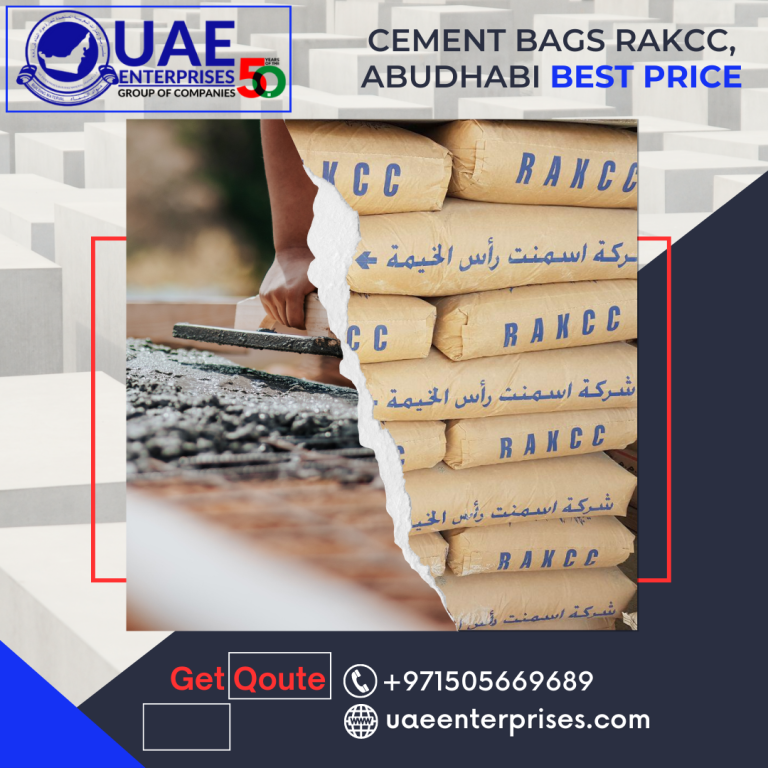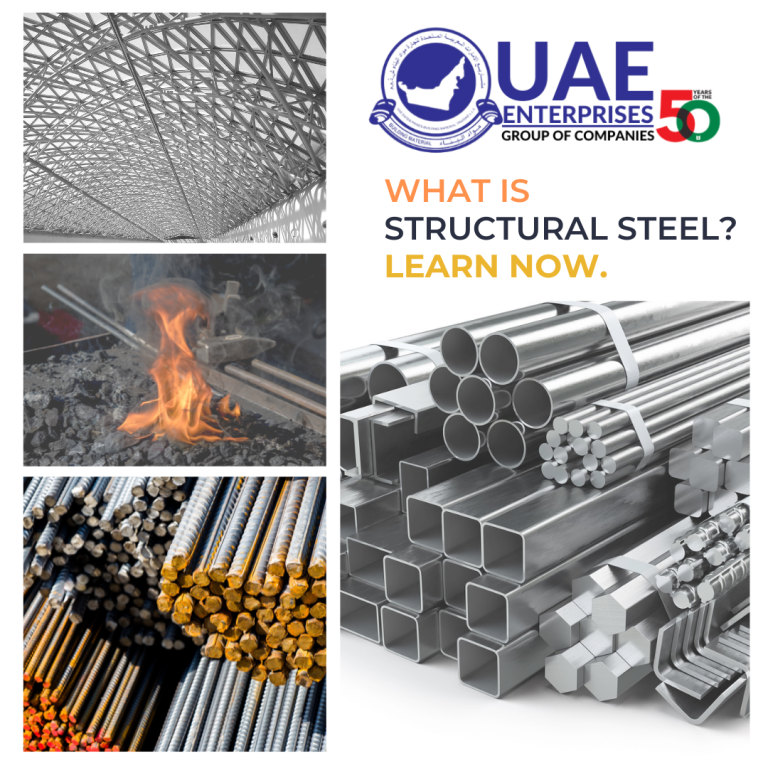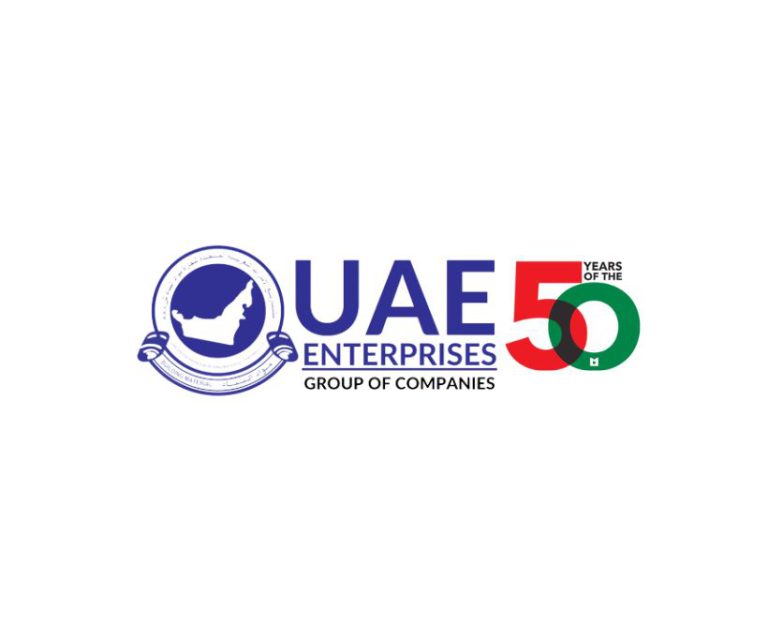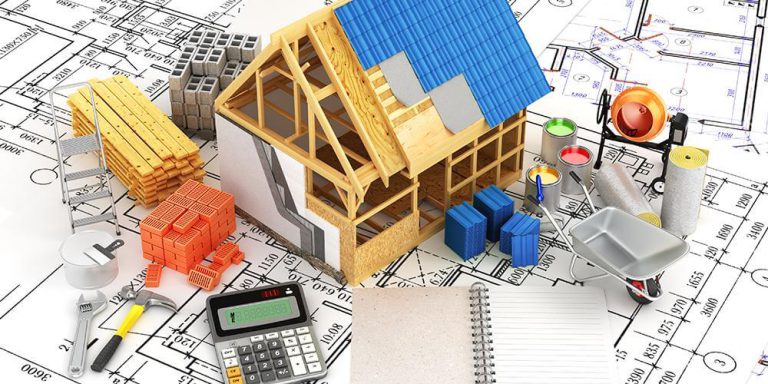Contact
Landline: (+971) 42821260
Fax: (+971) 4282 1006
(+971) 4282 7106
Email: contactus@uaeenterprises.com
Address
Head Office: - 8 Airport Rd - Garhoud - Dubai, United Arab Emirates.
Contact
Landline: (+971) 42821260
Fax: (+971) 4282 1006
(+971) 4282 7106
Email: contactus@uaeenterprises.com
Address
Head Office: - 8 Airport Rd - Garhoud - Dubai, United Arab Emirates.

Welcome to UAE Enterprises Building Materials’ blog, where we bring you the latest news and insights on the world of construction materials. Today, we’ll be discussing the importance of cement in modern construction.
The cornerstone of Modern Construction, Cement is a crucial material in the construction industry, providing the foundation for many of the world’s most iconic structures. From towering skyscrapers to vast dams, cement is a building block that provides strength, durability, and versatility.
The history of cement can be traced back to ancient times when the Greeks and Romans used it to build structures that still stand today. However, it was not until the 19th century that cement production became a large-scale industry, with the invention of the rotary kiln and the development of new manufacturing processes.
Today, cement is used in a wide range of construction applications, from building foundations to highways and bridges. It is an essential material for constructing structures of all types, including residential homes, commercial buildings, and large-scale infrastructure projects.
One of the main benefits of cement is its strength and durability. Once it hardens, it can withstand the forces of nature and remain intact for decades, if not centuries. It is also versatile and can be used in a variety of applications. It can be poured into moulds to create decorative features or used to create intricate patterns on floors and walls.
Another advantage of cement is its low cost. Cement is relatively inexpensive and widely available compared to other building materials like steel or wood. This makes it an ideal material for large-scale construction projects where cost is a significant factor.
Cement production involves a complex process that requires a significant amount of energy. Raw materials like limestone and clay are mined and then ground into a fine powder. The powder is then heated to high temperatures in a kiln, creating a chemical reaction that transforms it into a cement clinker. The clinker is then ground into a fine powder, which is mixed with water to create cement.
Despite its many benefits, cement production can have a negative impact on the environment. The manufacturing process requires large amounts of energy, and the use of fossil fuels can lead to greenhouse gas emissions. Additionally, the mining of raw materials like limestone and clay can have a significant impact on local ecosystems.
To address these concerns, the cement industry has been working to develop more sustainable practices. New manufacturing processes have been developed that use alternative fuels and reduce greenhouse gas emissions. Additionally, the use of recycled materials like fly ash and slag can help reduce the environmental impact of cement production.
At UAE Enterprises Building Materials, we are committed to sustainability and reducing our environmental impact. We offer a range of eco-friendly cement products that use recycled materials and alternative fuels. Our products meet the highest industry standards, ensuring that our customers receive the best possible quality.
We offer a range of cement options, including Portland cement, white cement, and slag cement. Portland cement is the most commonly used type of cement in a wide range of applications, from building foundations to highways and bridges. White cement is a speciality product that is used in decorative applications, creating a bright, clean finish. Slag cement is made from recycled materials and is an eco-friendly alternative to traditional cement products.
cement is a vital building material that has shaped modern construction as we know it. Its strength, durability, and versatility make it an ideal material for various applications, from residential homes to large-scale infrastructure projects. While its production has an environmental impact, the cement industry is committed to developing more sustainable practices to ensure that it remains a cornerstone of modern construction for generations to come. At UAE Enterprises Building Materials, we are proud to offer high-quality cement products that meet the highest industry standards and help our customers build a more sustainable future.

Sructural steel is a category of steel used for making construction materials in a variety of shapes. Many structural steel shapes take the form of an elongated beam having a profile of a specific cross-section. Structural steel shapes, sizes, chemical composition, and mechanical properties such as strengths, storage practices, etc., are regulated by standards in most industrialized countries.
Most structural steel shapes, such as I-beams, have high second moments of area, which means they are very stiff in respect to their cross-sectional area and thus can support a high load without excessive sagging.
![]()
Structural steel roof at Manchester Victoria Station
The shapes available are described in many published standards worldwide, and a number of specialist and proprietary cross sections are also available.
While many sections are made by hot or cold rolling, others are made by welding together flat or bent plates (for example, the largest circular hollow sections are made from flat plate bent into a circle and seam-welded).[2]
The terms angle iron, channel iron, and sheet iron have been in common use since before wrought iron was replaced by steel for commercial purposes. They have lived on after the era of commercial wrought iron and are still sometimes heard today, informally, in reference to steel angle stock, channel stock, and sheet, despite that they are misnomers (compare “tin foil”, still sometimes used informally for aluminum foil). In formal writing for metalworking contexts, accurate terms like angle stock, channel stock, and sheet are used.
Most steels used throughout Europe are specified to comply with the European standard EN 10025. However, many national standards also remain in force.[citation needed]
Typical grades are described as ‘S275J2’ or ‘S355K2W’. In these examples, ‘S’ denotes structural rather than engineering steel; 275 or 355 denotes the yield strength in newtons per square millimetre or the equivalent megapascals; J2 or K2 denotes the materials toughness by reference to Charpy impact test values; and the ‘W’ denotes weathering steel. Further letters can be used to designate fine grain steel (‘N’ or ‘NL’); quenched and tempered steel (‘Q’ or ‘QL’); and thermomechanically rolled steel (‘M’ or ‘ML’).
1. S275JOH Specification S275JOH is steel grade in EN 10219 specification, EN 10210 standard. And the most widely used specification is EN10219 standard, which is Cold formed welded structural hollow sections of non-alloy and fine grain steels.
EN10219-1 specifies the technical delivery conditions for cold formed welded structural hollow sections of circular, square or rectangular forms and applies to structural hollow sections formed cold without subsequent heat treatment.
Requirements for S275JOH pipe tolerances, dimensions and sectional s275 pipe properties are contained in EN 10219-2.
2. S275JOH Steel Pipes manufacture Process
The steel manufacturing process shall be at the discretion of the steel producer. S275JOH carbon steel pipes can be made in ERW, SAW or seamless process. All S275JOH steel material and S275JOH pipes should conform to EN10219 standards.[3]
The normal yield strength grades available are 195, 235, 275, 355, 420, and 460, although some grades are more commonly used than others e.g. in the UK, almost all structural steel is grades S275 and S355. Higher grades are available in quenched and tempered material (500, 550, 620, 690, 890 and 960 – although grades above 690 receive little if any use in construction at present).
A set of Euronorms define the shape of a set of standard structural profiles:
Steels used for building construction in the US use standard alloys identified and specified by ASTM International. These steels have an alloy identification beginning with A and then two, three, or four numbers. The four-number AISI steel grades commonly used for mechanical engineering, machines, and vehicles are a completely different specification series.
The standard commonly used structural steels are:[4]
The concept of CE marking for all construction products and steel products is introduced by the Construction Products Directive (CPD). The CPD is a European Directive that ensures the free movement of all construction products within the European Union.
Because steel components are “safety critical”, CE Marking is not allowed unless the Factory Production Control (FPC) system under which they are produced has been assessed by a suitable certification body that has been approved to the European Commission.[5]
In the case of steel products such as sections, bolts and fabricated steelwork the CE Marking demonstrates that the product complies with the relevant harmonized standard.[6]
For steel structures the main harmonized standards are:
The standard that covers CE Marking of structural steelwork is EN 1090-1. The standard has come into force in late 2010. After a transition period of two years, CE Marking will become mandatory in most European Countries sometime early in 2012.[7] The official end date of the transition period is July 1, 2014.
@source @wikipedia
 Read MoreGolden Jubilee (50 Years of Continues Relaible Delivery)
Read MoreGolden Jubilee (50 Years of Continues Relaible Delivery) Read MoreNo.1 Building Material Company in GCC Region
Read MoreNo.1 Building Material Company in GCC Region Read MoreBest Plywood for Construction Companies
Read MoreBest Plywood for Construction Companies